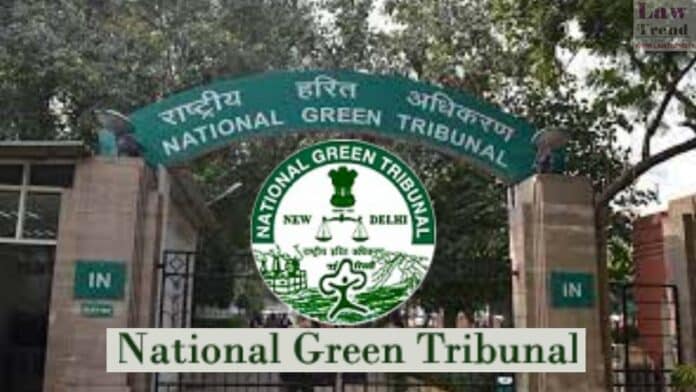The National Green Tribunal has directed the authorities concerned file a further status report regarding the remediation measures for contamination of groundwater by chromium dumps in Uttar Pradesh’s Kanpur.
The NGT also observed that the water quality of the river Ganga in Kanpur needs to be improved by preventing the discharge of pollution upstream.
The tribunal was hearing the issue regarding the alleged failure of the authorities to scientifically handle and dispose of chromium dumps at Rania in Kanpur Dehat and Rakhi Mand in Kanpur Nagar which were in existence since 1976 and had resulted in contamination of groundwater, thus adversely affecting health of inhabitants and depriving them of access to drinking water.
It was also hearing the matter pertaining to the water pollution caused by tanneries, which continued to discharge untreated industrial effluents containing toxic chromium into an irrigation canal through an inadequately functioning common effluent treatment plant (CETP) at Jajmau in the state.
Noting the reports filed by the state pollution control board (PCB) and an oversight committee, a bench of chairperson Justice A K Goel said, “We find that progress in construction work of CETP at Jajmau is not satisfactory and further, the water quality of river Ganga and Kanpur Nagar which still remains in D-category needs to be improved by preventing discharge of pollution upstream.”
“CETP needs to remediate chromium, chromium needs to be treated in a chromium recovery plant so as to ensure that chrome-bearing effluents are not discharged into the Ganga or loaded on the land in the name of irrigation by exploiting dilution by treated sewage effluents,” the bench also comprising judicial member Justice Sudhir Agarwal and expert member A Senthil Vel said.
It said the next report has to mention the existing chromium level in groundwater where currently such combined effluents are used for irrigation.
“After installation of 20 million litres per day (MLD) CETP (being constructed), a well laid down monitorable ferti-irrigation plan will have to be laid down notifying the periods in which such effluents will be let out in the Ganga and their quality. This aspect be overseen by State PCB, the national mission for clean Ganga (NMCG) and the Central Pollution Control Board (CPCB),” the bench said.
“Periodical health surveys be undertaken and remedial action taken in terms of safe drinking water…” the bench added.
The bench also noted that out of the estimated 85,008 metric tonnes (MT) of legacy chromium waste at different locations, two companies have lifted 77,245 MT of waste and taken it to the designated site for treatment and stabilisation.
“In order to ensure that standard operating procedures (SOPs) are followed during excavation, transportation, and stabilisation, Uttar Pradesh PCB needs to monitor the process…,” it said.
Regarding the remediation of the contaminated groundwater, the bench said that the tribunal had earlier in September last year directed the installation of reverse osmosis (RO) and nanofiltration plant.
“…we do not find the current status of groundwater quality profile and nor of the pilot project to show removal of chromium by installing RO and nanofiltration system, as directed…,” it said.
“While pump and treat method along with bio-remediation may be long-term approaches, measures like RO installation at a small level can quickly demonstrate performance which may be done on priority,” the bench added.
The tribunal also directed the authorities concerned to explore the possibility of converting stabilised waste into concrete blocks.
Also Read
The green panel then directed the joint committee comprising the NMCG, State PCB, CPCB and the District Magistrate of Kanpur Dehat to file a further status report regarding the status on October 31 by November 15.
The tribunal said the report has to mention the status of complete removal and transportation of excavated chromium waste from all the sites along with the waste treated, stabilised and ensured for stability.
It also has to mention the “groundwater profile in terms of chromium in the areas under question and installation of the pilot project on chromium removal by RO/nanofiltration”.
Further, the report has to provide the execution plan with timelines for groundwater remediation along with the issue of the completion of the CETP for chromium treatment and the existing groundwater scenario.
The matter has been posted for further proceedings on November 29.




